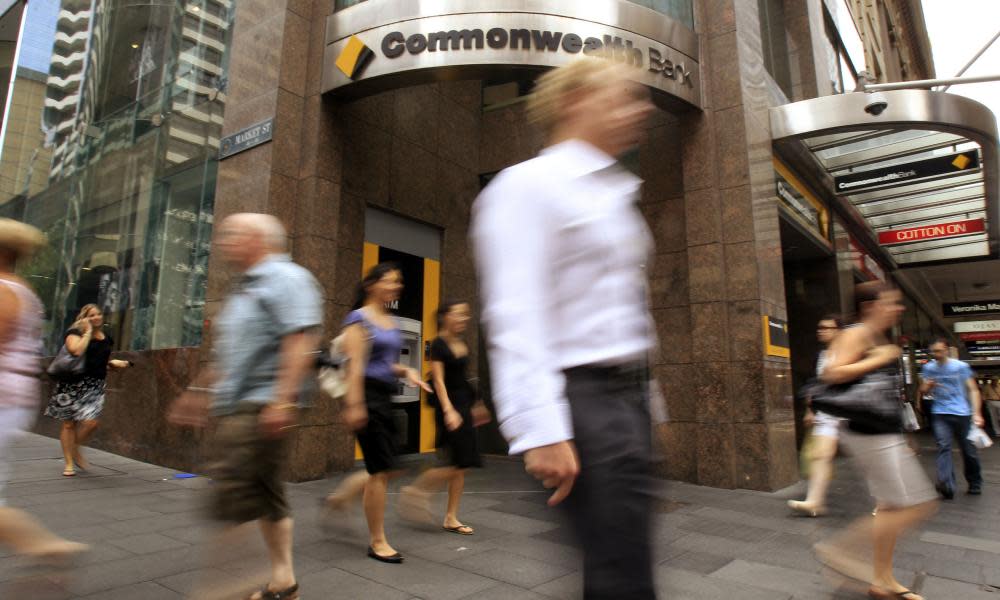Banking royal commission: CBA admits it failed to find system error for four years

ANZ has been criticised for sending more than 300,000 letters to customers offering overdraft facilities without checking if they could afford the extra debt.
And Commonwealth Bank has admitted to an error in its automated system, that it failed to detect for four years, which gave thousands of customers access to an overdraft facility after setting their rental expenses at zero.
After more than a week of hearings dedicated to episodes of alleged misconduct by Australia’s banks, the financial services royal commission has begun focusing on banks’ data processing systems and administration errors.
Since mid-2010, roughly $239m has been repaid to 540,000 customers who have been affected by account administration and processing errors in connection with home loans alone.
The remediation has been paid by financial services entities including ANZ, CBA and Bankwest, National Australia Bank, Westpac and the Bank of Queensland.
The commission heard on Tuesday that processing errors frequently occur across multiple products offered by Australia’s banks.
The commission heard two case studies on Tuesday involving CBA and ANZ.
Clive van Horen, CBA’s executive general manager of retail products, explained how the bank discovered a programming error in its automated “serviceability calculator” in mid-2011 that it used to assess applications for personal overdrafts.
An overdraft facility allows customers to spend more money than they have in their account, forcing the customer into negative balance, with interest paid on that negative balance.
In 2011, the interest rate CBA charged on its overdraft facility was 16.6%.
The error meant 9,577 customers were granted an overdraft when their application should have been declined by the bank because they could not afford it, and 1,152 customers were granted a higher overdraft limit for which they should have been eligible.
CBA eventually remediated 9,161 customers and wrote off overdraft balances, reduced limits where required and waived outstanding amounts worth roughly $2.5m after discovering the mistake.
Counsel assisting, Albert Dinelli, said it raised serious concerns about responsible lending practices.
Van Horen said CBA discovered the problem on 1 September 2015, some time after the Consumer Action Legal Centre raised concerns about CBA’s overdraft application process and the Australian Securities and Investments Commission [Asic] started asking questions. He said a new manager inside CBA then decided to review the automated overdraft processing system and that was when the problem was discovered.
“It was fixed two-and-a-half weeks later and then we notified Asic in early November [2015],” he said.
He said the problem had existed from the time the automated system had been in existence. During that time, CBA had received 331,000 applications from roughly 287,000 customers.
The commission also heard testimony from Heang Forbes, ANZ’s pricing operations chapter lead, on Tuesday.
In February 2016, Asic issued five infringement notices worth $212,500 for ANZ’s alleged failures to comply with the requirements to make inquiries about the maximum credit limit required by customers in respect of pre-approved offers for overdrafts.
Between November 2014 and January 2015, ANZ issued a series of mail-outs to existing customers, offering unsolicited, pre-approved overdraft facilities with limits of $500 or $1000.
Forbes admitted that ANZ sent roughly 330,000 letters in 2014, and 2,992 overdraft facilities were taken up by customers between November 2014 and February 2015.
The letters told the customers that they had been “pre-selected” and “pre-approved” for an overdraft facility, with “no application fee.”
Dinelli said: “Well it’s not an application is it? There was no application made.”
Forbes replied: “No.”
Dinelli said: “And then it says you only pay interest on the credit you use ... well, why would a customer pay for credit they don’t use?”
Forbes replied: “Um, that’s right,” then she added that a $5 monthly fee would be charged on the overdraft facility regardless of whether or not it was used.

 Yahoo News
Yahoo News 
